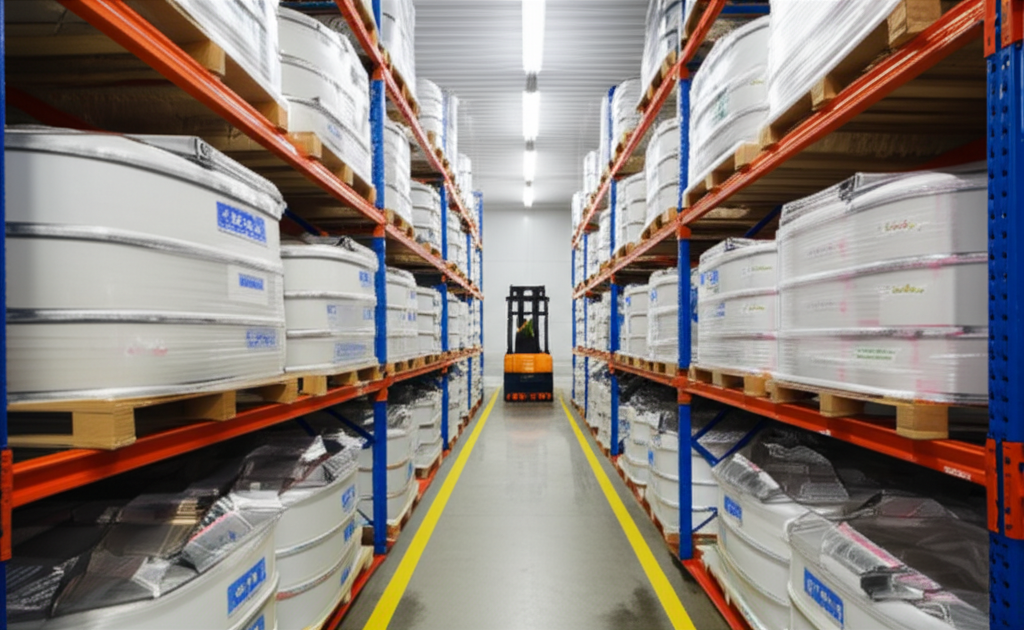2,4,6-Trichloropyridine, with the chemical formula C5H2Cl3N, serves as a vital organic intermediate in modern industries, particularly for pharmaceuticals, pesticides, dyes, and fragrances. This white-to-light-yellow solid compound faces challenges in synthesis due to low efficiency in conventional methods, hindering large-scale production. Historically, approaches like pyridine chlorination or oxidation-chlorination of 2,6-dichloropyridine yielded only around 60% efficiency, marred by incomplete reactions and poor selectivity.
Addressing these limitations, a breakthrough synthesis technique has emerged, focusing on catalyst-enhanced oxidation and chlorination steps. The new method, detailed through comprehensive experimental results, achieves remarkable improvements—yields exceeding 75% and purity levels above 98%, making it ideal for industrial applications. This innovation not only enhances cost-effectiveness but also aligns with sustainability goals by minimizing waste in chemical processes.
The synthesis unfolds in three sequential steps for optimized results. First, in the oxidation phase, 2,6-dichloropyridine is combined with trifluoroacetic acid solvent and a catalyst—either molybdenum trioxide (MoO3) or aluminum oxide (Al2O3)—amounting to 0.5%–1.5% of the substrate's mass. Stirring occurs for 20–40 minutes, followed by the dropwise addition of 30% H2O2 solution in a mass ratio of 1:1.0–2.5 to chloropyridine. The mixture reacts at 85°C for 3–5 hours, then cools to −5°C to yield a dilute solution of 2,6-dichloropyridine N-oxide. This catalyst inclusion dramatically boosts oxidation completeness, driving higher conversion rates.
Next, the oxides undergo separation for purification. The solution is filtered to isolate the catalyst, enabling reusability and cost savings. Residual solvent and water are recovered via vacuum distillation, leaving a raw mother liquor. This is treated with solvent extraction using agents like dichloromethane, dichloroethane, chloroform, toluene, or chlorobenzene. Post-extraction, phases are separated through partitioning, and desolvation yields pure 2,6-dichloropyridine N-oxide as a refined intermediate. This step ensures high recovery and purity, setting the stage for efficient chlorination.
The final stage involves chlorination and target product isolation, where the purified N-oxide reacts with excess phosphorous oxychloride (POCl3) under reflux conditions for 4–6 hours. After completion, unreacted POCl3 is removed via pressure reduction, and the mother liquor undergoes similar extraction and separation with solvents to procure the finished product. Desolvation then delivers 2,4,6-trichloropyridine with minimal impurities. Experiments validate consistent yield performance: multiple trials report outputs of 75.4% to 76.1% across different catalyst and reagent combinations.
Key to this process is the catalytic role of MoO3 or Al2O3, which enhances reaction kinetics and selectivity. Specific conditions, such as trifluoroacetic acid usage in a 1:3.0–3.5 mass ratio with chloropyridine, provide an optimal solvent environment. This approach eliminates common pitfalls, like low H2O2 utilization or inadequate chlorination, prevalent in pre-existing techniques. Industrial scalability is paramount, as multiple embodiments in 3000L reactors demonstrate robust performance without degradation, highlighting its applicability in mass production settings.

Comparatively, the high yield (>75%) and purity (~98%) represent a 25% increase over older methods, translating to significant economic benefits and environmental advantages due to reduced resource waste. As chemical industries seek more efficient processes, this method emerges as a superior alternative, particularly for sectors reliant on high-quality intermediates. Future adaptations could explore variations in catalysts or solvent systems, potentially unlocking further optimizations in synthetic pathways.
Manufacturing Facilities






Professional Export Experience
to Global Customers

1. 20 years of R&D, manufacturing and sales experience, serving customers in 60 countries and regions around the world;
2. Own R&D laboratory, pilot platform and large-scale production workshop, which can meet the audit requirements of global customers;
3. We can satisfy customers' perfect transition from small scale lab requirements (gram level) to commercialization requirements (hundred tons level).
A: We don't have Minimum Order Quantity, exact quantity should be provided before quotation for us to calculate the exact cost.
A: We don't provide free samples due to lots of request and expensive international courier's cost, we can deduct the sample charge after commercial order placed.
A: Our payment terms: Small or sample order: T/T IN ADVANCE. Commercial order: First order should be by T/T IN ADVANCE or L/C at sight, and following orders T/T 30~90days is acceptable subject to approval of credit application.